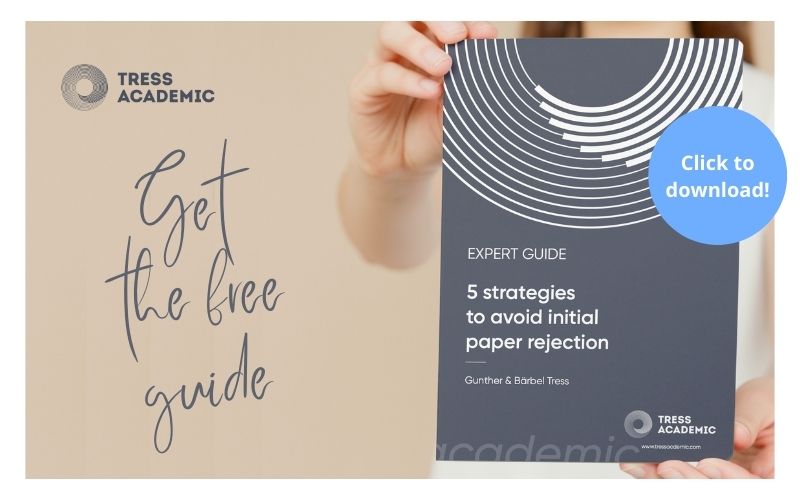The restrictions brought on by the Corona virus means hardship, isolation, and anxiety for many of us. But it can also be a time to establish new habits and focus on what counts. Why not use this special situation to get your first, or your next journal paper written? Use the lockdown to boost your paper writing credentials! This time doesn’t have to be lost!
We know, you are not in your office, perhaps you don’t have the fastest computer back home, or access to all your material, plus you are in the middle of an experiment that is now put on hold, and you don’t know when you can continue with data collection, … we know! The restrictions in place all over the world due to the Corona virus pandemic have made everything different, and it’s not certain when they will go back to normal.
We want you to make the best out of this crisis. Staying safe and healthy are key priorities now, but getting something done is also valuable for stabilising your mental health during this crisis.
We want you to use the time to get started with a paper that can later be submitted to an international peer-reviewed journal, once times have improved. Just follow our 15 steps to turn the crisis into productive paper writing time!

1. Accept the situation – stop grumbling
The first big shock of the Corona pandemic might have worn off by now and you’ve realised the impact it will have on your life. Take a breath, accept that what at first looked like an exceptional state of affairs might actually become the new normal for some time yet. You’re at home, away from the facilities of university, but we want to help you to make the best out of the situation. Complaining about what you could be doing if times were different does not help: Facing reality, and rethinking what you can still accomplish under the unusual circumstances, does.
2. Get organised
Working from home is challenging. At the beginning, you feel so relaxed, you are your own boss and you can start working early or late, and it doesn’t seem to matter that much. By now, you have worked through the first weeks of the home-office challenge, and it is time to get organised and structure your working day, even when it takes place at your home. Have a fixed time when you start and when you’re finished, which includes regular breaks. Avoid drifting into the day, but instead, structure the time that you spend in your home-office. For more ideas see our post #45: 20 great ways to stay productive when Corona (COVID-19) has locked you out of university.
3. Embrace this time for writing
The number one reason people don’t write papers is that they do not have the time to do it, at least this is what we hear very often in our Paper Writing Courses. This has now changed. While there are many things you probably cannot do very well from your home-office, you can still write! Embrace the time that you have now and use it to produce a paper!
4. Brainstorm potential topics to write about
The Corona lockdown may have caused changes in the way you conduct your research and how capable you are of following your Publishing Strategy. However, it is how it is, so you need to adapt to the current situation and brainstorm what other topics you could write about, if your current work is not ready to be published yet. Don’t limit yourself, create a list of 5-10 topics that you could potentially write about. You will see, something good will come up! Remember, it doesn’t always have to be a new research paper, you can also write a review or a discussion paper, which are equally promising in the publishing world (for more details see our post #28 on different paper types).
5. Pick the easiest one
Don’t stress yourself. You don’t have to write your best paper ever during the Corona crisis. Pick a topic that you have something to say about. A good way to start is always a review paper that’s linked to the literature review of your current project. Skip perfection, an average-quality paper that is written is better than a super paper that never gets finished!

6. Define a submission date
It probably feels very far away, but the key to success is defining a realistic date when you hope to be able to submit your paper. Having a defined date means knowing where the goalposts are that you want to reach. Your deadline will help keep you going and motivate you when you’re not feeling like it. See our post Deadline disaster: Seven easy steps to avoid for how to make sure you stick to your deadline.
7. Schedule a writing session every day
The days in home-office can look very similar and start to run together after a while. This sounds boring, but you can use it to your advantage: Schedule one or two hour-long sessions each work day so that you will make progress on your paper every day. You’ll be surprised by the progress you will make!
8. Decide on co-authors
Quarantine means physical isolation, but it does not mean you cannot have co-authors on your paper. Indeed, we have never been so accessible online as we are right now. Think about sharing some of the paper workload either with a fellow colleague or, if you are a less-experienced author, use an experienced researcher as a sparring partner for your ideas.

9. Decide on a journal
Once you know what your paper will be about, look for a journal that might be interested in your work. Don’t assume that every journal in your field would accept your paper and its topic. They are very specialised and have preferences. Knowing the target journal from the start allows you to write the paper according to their specific requirements.
10. Outline paper structure
Depending on which type of paper you are writing, draft a structure for your paper now. What are the large sections that you need? Try to draft even the headings of subsections. This will outline your work plan, so the smaller the units that you have outlined, the better they can be applied to the daily writing sessions.
11. Write paper sections
Since you already have the overview of what needs to be written in the paper, now you “only” have to write it. Writing a full paper section (e.g. Introduction, Methods, Results) takes several writing sessions. So work on one subsection of such a paper section at a time. This way, it will take you a couple of days to write the Introduction, then you start on the Methods for another couple of days. If you break it down into these smaller units, it will make it easier for you to write.
12. Self-edit your paper
Once all sections are written, the paper feels finished. It isn’t! You have produced a draft. If possible, give a few days break between writing and editing the paper for the first time. Then, carefully read the draft several times and check whether your paper is clear, understandable, has a message and follows a logical structure. Also edit it for length, language, and style.
13. Ask for feedback from a colleague
It will be tempting to submit the paper once you’ve completed your editing , but don’t do it just yet. Send your paper to a friend or a colleague and ask them to provide feedback. This step is typically of great value as their feedback will wipe out many mistakes and flaws in the paper, which are invisible to you as the author.
14. Stick to journal guidelines
Every journal, or at least every publisher, has specific requirements for how they want the manuscript to be formatted when it is submitted to them. You can find these requirements in the Author Guidelines on the journal’s website. Stick as closely to these guidelines as possible. It will benefit you and your paper, as the journal can process it faster.
15. Submit
Once your paper is written, edited by you and your co-authors, and been given feedback from another colleague, you are ready to submit. Don’t be scared of this process. If your work is interesting and relevant for other researchers in your field and you submit it to a journal that publishes similar work, you have a good chance of making the cut.
Conclusion
We hope our 15 tips give you some guidance for how you can use the lockdown at your home-office to get started with writing a paper for a journal. Download our free Action Plan for Paper Writing During the Corona Lockdown to help you get started!
Be aware, if you are not going to start now, you may never do it. It’s much better to stick to your paper-writing plan during your time at home, come whatever. Let go of your aspiration to write and submit the perfect paper. Your paper does not have to be perfect, but it does need to be written. After that, it just needs to be good enough to get published, and truth be told, you have all the time in the world to make revisions!
P.S. If you need more help with:
>> getting your paper done,sign-up to Paper Writing Academy.
Relevant resources:
- Action Plan for Paper Writing During the Corona Lockdown
- Tress Academic’s Paper Writing Courses
- Smart Academics Blog post #8: Deadline disaster: Seven easy steps to avoid
- Smart Academics Blog post #28: What type of journal paper to write?
- Smart Academics Blog post #38: Why you need a publishing strategy
- Smart Academics Blog post #45: 20 great ways to stay productive when Corona (COVID-19) has locked you out of university.
- Smart Academics Blog #122: How do you get published in a good journal?
More information:
Do you want to successfully publish your paper? If so, please sign up to receive our free guides.
© 2020 Tress Academic
#PaperWriting, #quarantine, #lockdown, #Coronavirus, #COVID19, #JournalPaper
